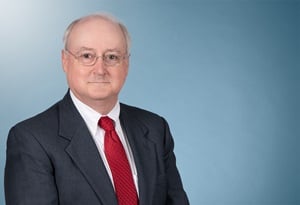Supreme Court Decides FTC v. Actavis Inc.
On June 17, 2013, the Supreme Court of the United States decided FTC v. Actavis, Inc., No. 12-416, holding that a "reverse-payment" or "pay-for-delay" settlement between a brand-name-drug manufacturer and a generic-drug manufacturer can violate the antitrust laws under a rule-of-reason analysis, even if the generic-drug manufacturer's promise not to enter the market expires before the brand-name-drug manufacturer's patent expires.
In 2000, the FDA approved AndroGel, a drug developed by Solvay Pharmaceuticals, and Solvay obtained a patent on the drug in 2003. Later that same year, Actavis, Inc. filed an Abbreviated New Drug Application (ANDA) to market a generic drug modeled after AndroGel. Under the Drug Price Competition and Patent Term Restoration Act of 1984, commonly known as the Hatch-Waxman Act, Actavis was required to assure the FDA in one of four specified ways that its generic drug would not infringe Solvay's patents. Actavis used the fourth method of assurance: a certification that Solvay's patent was "invalid or will not be infringed by the manufacture, use, or sale" of Actavis's generic drug. Using this method of assurance automatically counts as patent infringement, and Solvay sued Actavis and others for patent infringement. The parties ultimately settled the patent-infringement lawsuit by Solvay paying Actavis money in exchange for Actavis's promise to refrain from marketing its generic drug until 2015 (approximately five years before Solvay's patent expired) and Actavis promising to help market Solvay's brand-name drug AndroGel. Because such a settlement involves the patent holder paying the alleged infringer, rather than the other way around, such settlements are sometimes known as "reverse-payment" settlements or "pay-for-delay" settlements.
The FTC then sued all of the settling parties, alleging that the settlement was simply a way to compensate Actavis for agreeing not to compete against Solvay, and therefore a violation of Section 5 of the Federal Trade Commission Act (15 U.S.C. § 45). The District Court dismissed the FTC's complaint and the Eleventh Circuit affirmed, holding that a reverse-payment settlement "is immune from antitrust attack so long as its anticompetitive effects fall within the scope of the exclusionary potential of the patent." Because patent holders have a legal right to exclude others from the market, the Eleventh Circuit held, an agreement by which other manufacturers will not compete within the effective time of the brand-name patent does not restrain competition any more than the patent itself would.
The Supreme Court reversed. The Court initially noted that reference to what the patent holder could do "does not by itself answer the antitrust question." Courts must measure a settlement's anticompetitive effects not solely against patent-law policy, but also against procompetitive antitrust policies such as the likely anticompetitive effects of the settlement, its redeeming virtues, the participants' market power, and potentially offsetting legal considerations, such as those in the patent law. The Court observed that "traditional" settlements in patent litigation—i.e., those in which the plaintiff receives money in exchange for dismissal of the lawsuit and other consideration, or in which the plaintiff pays money to settle a counterclaim—are generally not thought to be subject to antitrust liability, and the Court stated that it "do[e]s not intend to alter that understanding." But reverse-payment settlements are different. The Court also rejected the theory that the general legal policy favoring the settlement of lawsuits should immunize reverse-payment settlements from antitrust challenge. The Court recognized the value of settlements, especially in complex and expensive patent litigation, but held that other factors such as the settlement's potential adverse effect on competition cut against immunizing such settlements.
The Court ultimately held that reverse-payment settlements are not presumptively unlawful (and therefore should not be reviewed under a "quick look" approach), but should instead be analyzed under the rule-of-reason approach.
Justice Breyer delivered the opinion of the Court, in which Justices Kennedy, Ginsburg, Sotomayor, and Kagan joined. Chief Justice Roberts filed a dissenting opinion, in which Justices Scalia and Thomas joined. (Justice Alito did not participate in the case.)


